Hazard Services Roadmap - Hazard Services
Hazard Services Roadmap
last update: 7/27/2022
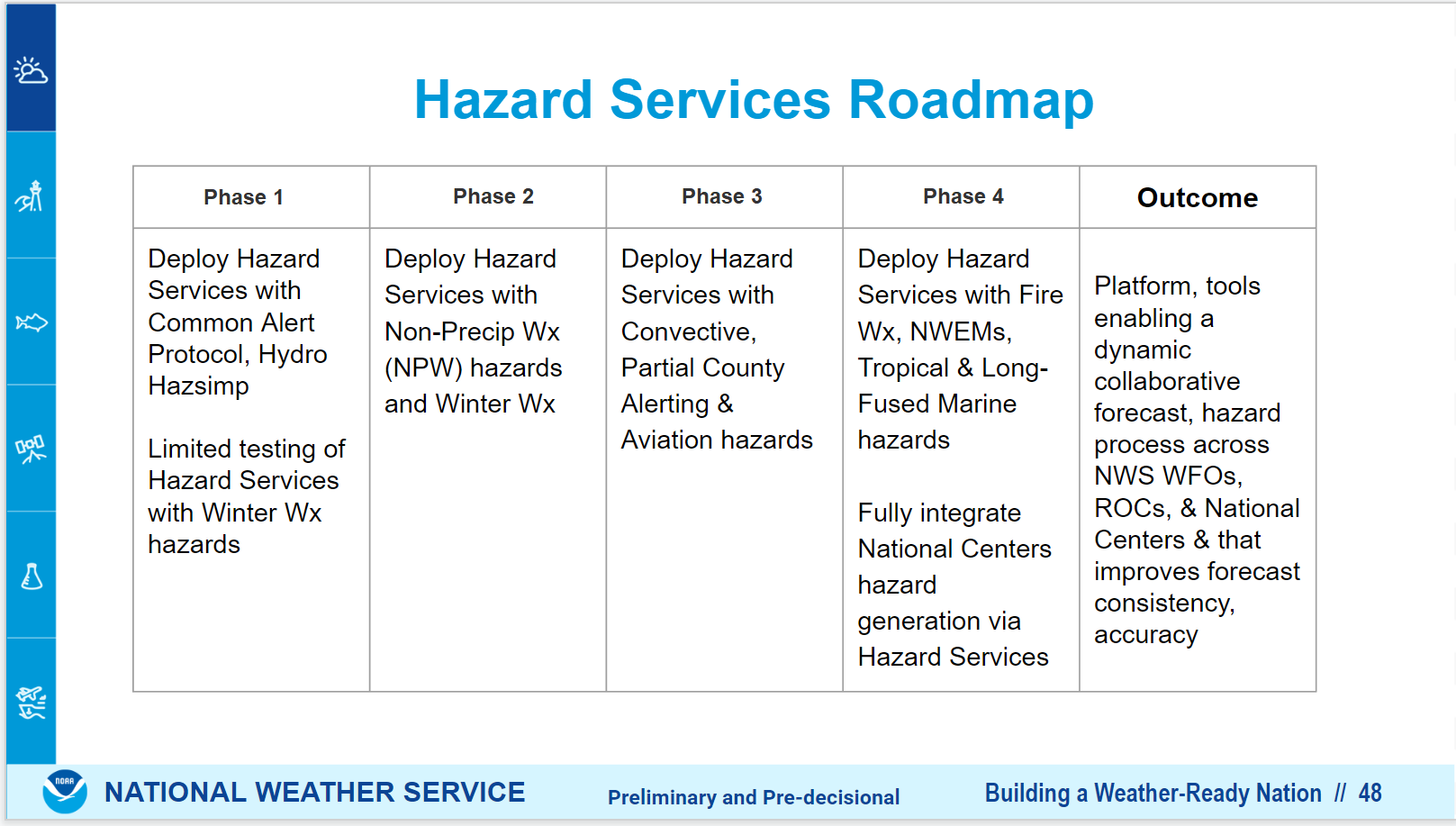
Next Upcoming Phase: NPW and Winter Weather (Coming in 2022)
Hazard Services deployed the Initial Operating Capability for hydro in AWIPS build 19.3.1 in 2019. By 20.2.3 in 2021 support for WarnGen hydro and RiverPro hydro watch, warning, and advisories was discontinued while support was added for hydro hazard simplification. The goal is for Hazards Services to assume all watch, warning, and advisory generation in major phases that will shift with AWIPS schedule changes (use the following dates as rough guidelines as there will likely be changes to the schedules):
- Non-Precipitation Weather (NPW) and winter weather deployment planned for 21.4.1 (late 2022) with operational use later in 2023,
- Convective weather and partial county alerting (planned for 2024),
- Fire weather, Non-Weather Emergency Messages (NWEMs), tropical and long-fused marine, national centers integration
The new capabilities undergo extensive forecaster testing in GSD-led routine forecaster tests and in the WFO field tests at AWIPS Technical Advisory Note (ATAN) sites before the new software is fielded operationally. Below is a description of the next phase and documentation of some of the previous phases and some potential future Hazard Services capabilities.
Hazard Services 21.4.1 - Non-Precipitation Weather (NPW) and Winter Weather
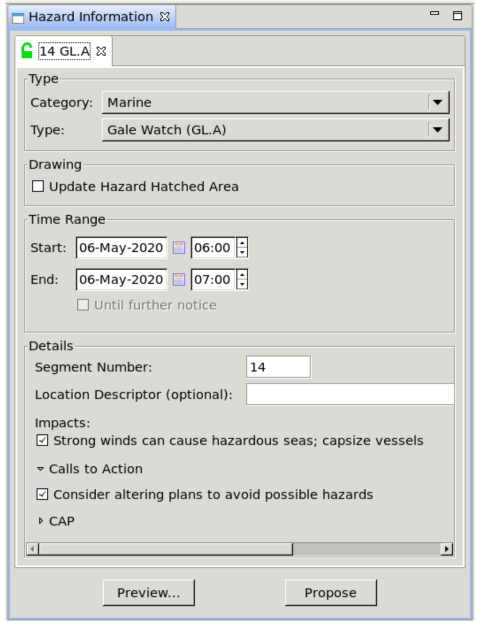
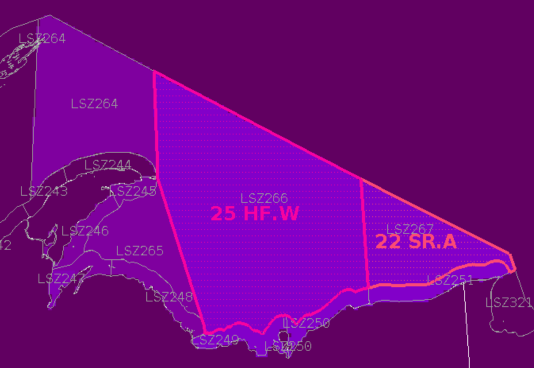
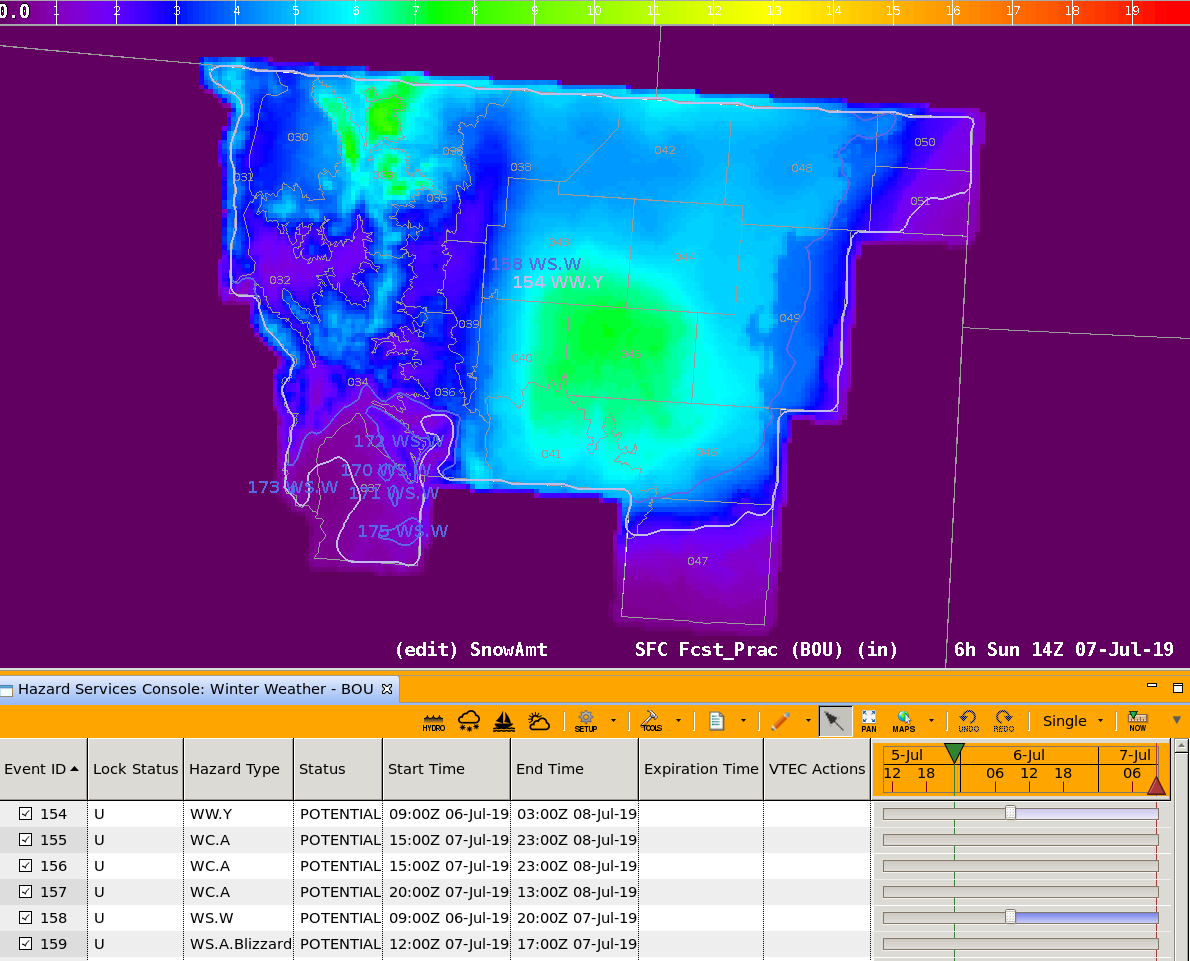
AWIPS Build 21.4.1 will deploy with NPW and winter weather Hazard Services capability. OCLO will be releasing focal point and user training coincident with 21.4.1 that will focus first on NPW and then on winter weather. Focal points will need to configure Hazard Services for NPW and winter weather and develop a local case for forecasters to take the user training and practice on their live AWIPS in practice mode later in 2023. WFOs are expected to complete the setup and training prior to the 2023-2024 winter season.
Hazard Service Convective (est 2024)
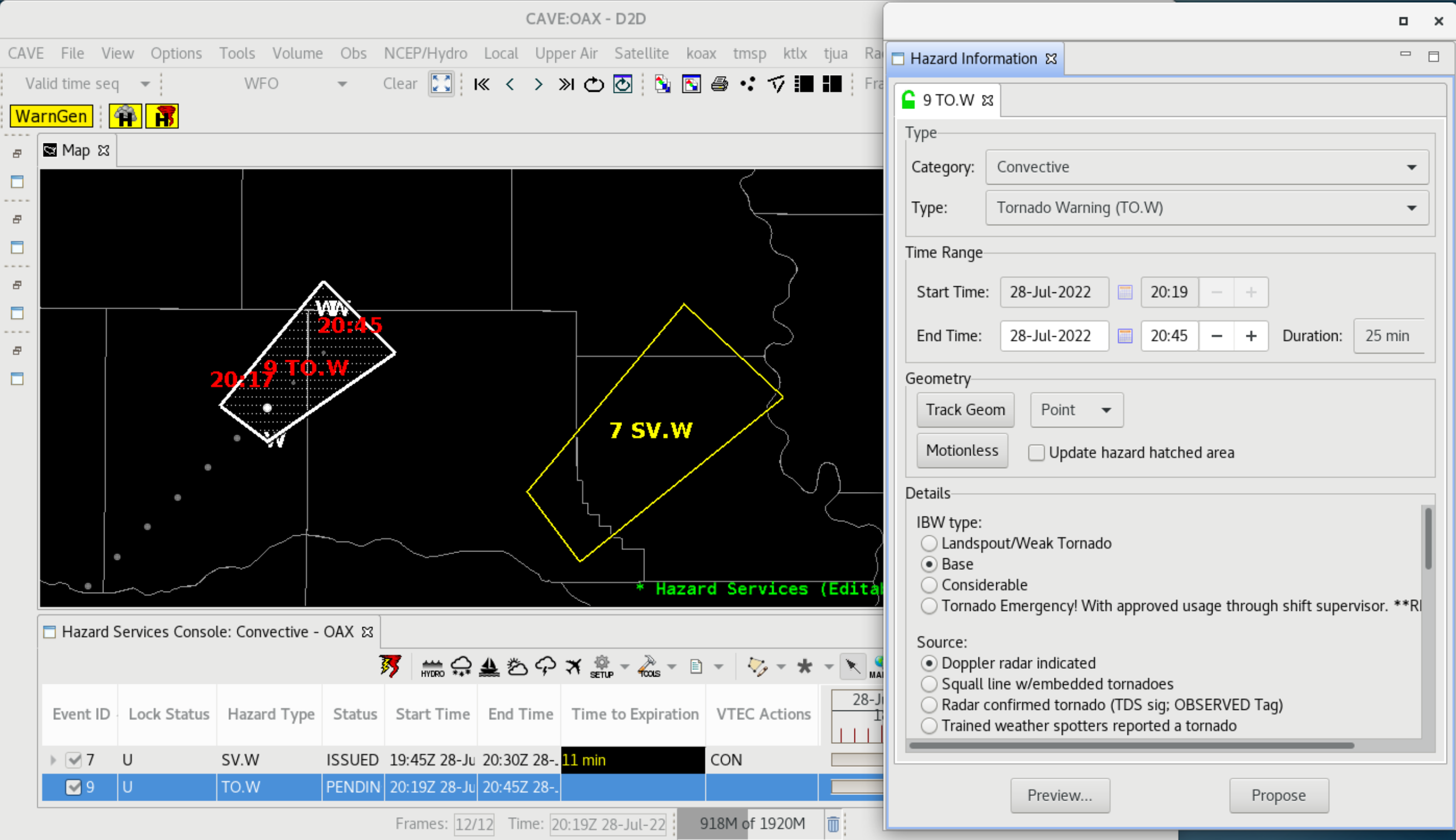
The convective Hazard Services will follow NPW and winter and is currently scheduled to deploy sometime in 2024 after the Redhat8 AWIPS release. A number of WFOs will volunteer to test the severe weather capabilities in another ATAN test. The partial county alerting is also slated to be included in this build of Hazard Services:
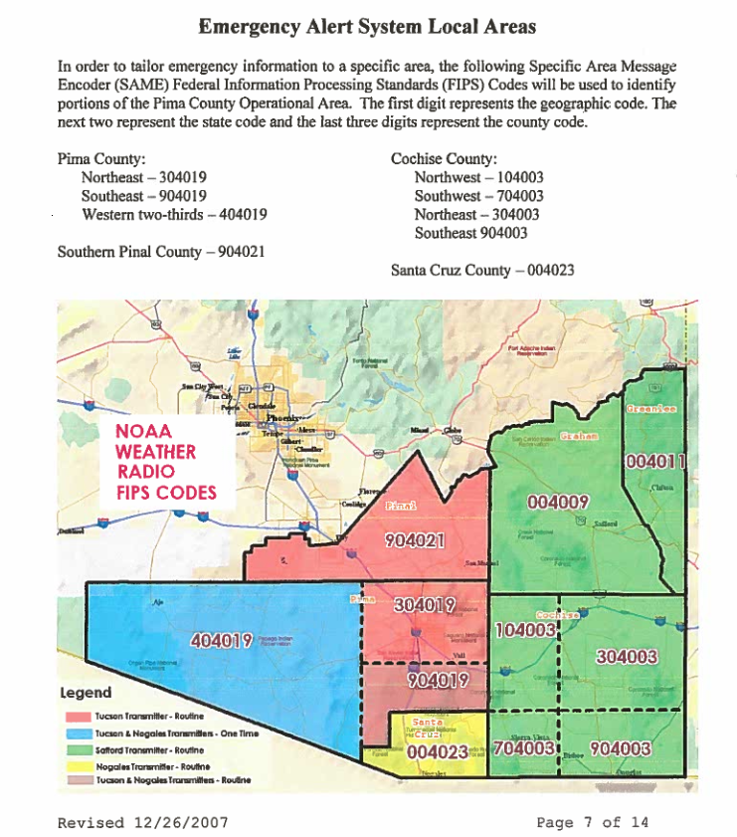
Final Phase (Fire Weather, Tropical, NWEMs, Long-Fused Marine, National Centers)
The final phase of the initial migration of all watch, warning, and advisories to Hazard Services involves fire weather, non-weather emergency messages (NWEMs), tropical, long-fused marine, and national center integration. There currently is no build schedule for the final phase.
Recap: Hazard Services Hydro IOC in AWIPS Builds 19.3.1 and 20.2.3
Hazard Services Initial Operating Capability (IOC) introduced hydro watch, warning, and advisory generation capability in AWIPS Build 19.3.1. WDTD released a full training course for forecasters and focal points consisting of:
- User training online (~2.5hrs)
- User VLab jobsheets for practice mode (~3-4hrs)
- Focal point training online (~3hrs)
- Hazard Services Focal Point Configuration Workshop (3 days)
- Focal point VLab jobsheets (~12hrs)
In 2021 the initial Hazard Services forecaster training was updated for use in the AWIPS Fundamentals Hazard Services training for new forecasters entering the Radar and Applications Course (RAC). While the old Hazard Services training was left as reference for forecasters who took that version, all forecasters are encouraged to access the new version of the training where all the videos have been mapped out to proficiencies on the Hazard Services proficiencies page. Students in the RAC currently have access to cloud instances to follow along and practice the training prior to taking a comprehensive Hazard Services proficiency exam, but forecasters not in RAC can access the training presentation and videos from the proficiencies page on the Internet and practice on their live AWIPS in practice mode.
The Hazard Services focal point training was organized in the Commerce Learning Center (CLC) under the "Hazard Services IOC Focal Point Training" curriculum. While the primary Hazard Services focal points attended a workshop to support initial deployment, other focal points take the training and do the jobsheets on their local AWIPS.
WDTD hosted four Hazard Services focal point configuration workshops from Dec 2019 to Feb 2020 for one focal point from each WFO. At the workshop, the focal point went through the jobsheets and prepared their site for the initial deployment. Following the workshop, the focal point brought the configuration files back to the office and completed configuration with the installation of 19.3.1. Forecasters then started taking the training and preparing for using Hazard Services for hydro watch, warning, and advisory generation operationally when primary and backup sites completed the training and coordinated a starting date.
Hydro hazard simplification was implemented in Hazard Services in 20.2.3, along with a Common Alert Protocol (CAP) formatter released under the hood. Some slight changes in hydro formatting were implemented in 20.2.3 as identified in the 20.2.3 Hazard Services Hydro Changes for forecasters and 20.2.3 Hazard Services Overview for Focal Points (see Training and Speaker Notes section of the one-stop shop Hazard Services reference page.
For Hazard Services program management questions, contact Mark.Armstrong@noaa.gov and for hydro IOC training questions contact Michael.A.Magsig@noaa.gov.
Hazard Services Development and Extended Future
Global Systems Lab is developing the remaining Hazard Services hazard generation capabilities prior to the integration into the baseline, and there are routine System and Functional Forecaster Assessment Testing exercises prior to integration into the baseline.
For Hazard Services Post IOC questions, contact:
- Mark.Armstrong@noaa.gov and Ashley.Kells@noaa.gov
- GSD development - Darrel.Kingfield@noaa.gov
- training Shannon.White@noaa.gov and Micheal.A.Magsig@noaa.gov.
Another significant Hazard Services-related project worth mentioning is Forecasting A Continuum of Environmental Threats (FACETS; Web link). FACETS aims to revolutionize hazardous weather communication with a potential paradigm shift in the communication of uncertainty and probabilistic information. While NSSL's Hazardous Weather Testbed routinely invites forecasters to participate in refining this approach and significant progress has been made, there currently is no planned AWIPS integration at this time.
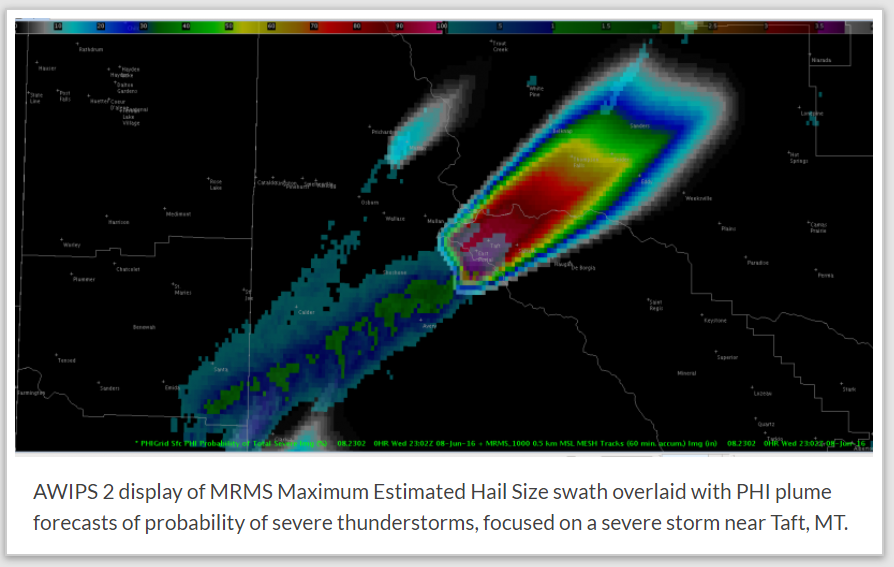
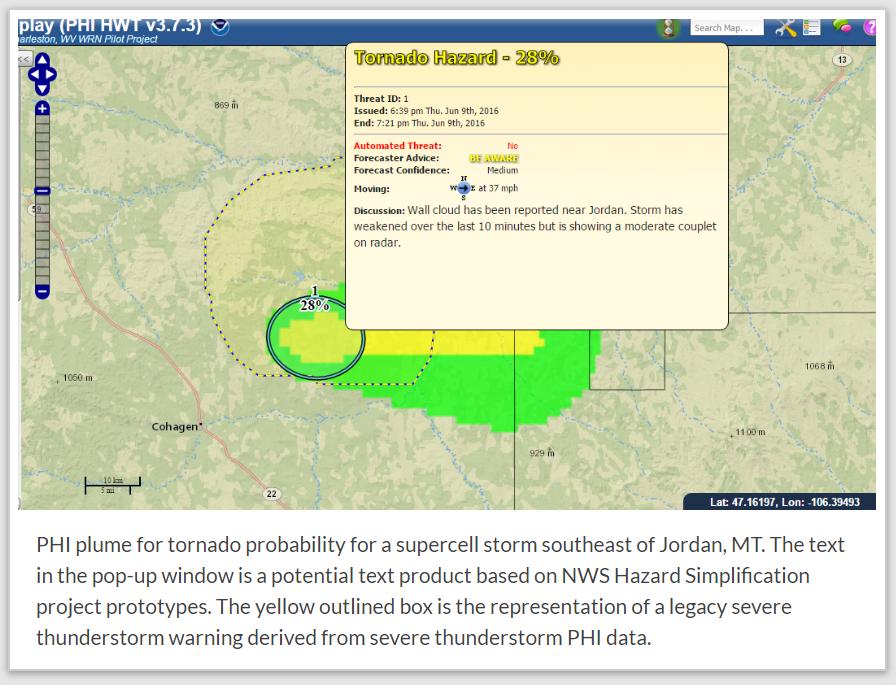
For more information on FACETS, see NSSL's FACETS page (Web).



